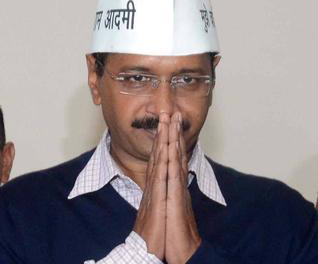Washington, Apr 23: Air pollution over northern India has plummeted to a 20-year-low for this time of the year, according to satellite data published by US space agency National Aeronautics and Space Administration (NASA).
The US space agency's satellite sensors observed aerosol levels at a 20-year low post the countrywide lockdown, implemented to slow the spread of the novel coronavirus.
"We knew we would see changes in atmospheric composition in many places during the lockdown," said Pawan Gupta, a Universities Space Research Association (USRA) scientist at NASA''s Marshall Space Flight Center. "But I have never seen aerosol values so low in the Indo-Gangetic Plain at this time of year," added Mr Gupta.
Acting Assistant Secretary of State for South and Central Asia Alice G Wells tweeted, "These images from NASA were taken each spring starting in 2016 and show a 20-year low in airborne particle levels over India. When India and the world are ready to work and travel again, let's not forget that collaborative action can result in cleaner air."
The data published with maps show aerosol optical depth (AOD) in 2020 compared to the average for 2016-2019. Aerosol optical depth is a measure of how light is absorbed or reflected by airborne particles as it travels through the atmosphere.
If aerosols are concentrated near the surface, an optical depth of 1 or above indicates very hazy conditions. An optical depth, or thickness, of less than 0.1 over the entire atmospheric vertical column is considered "clean." The data were retrieved by the Moderate Resolution Imaging Spectroradiometer (MODIS) on NASA's Terra satellite.
In the first few days of the lockdown, it was difficult to observe a change in the pollution signature. "We saw an aerosol decrease in the first week of the shutdown, but that was due to a combination of rain and the lockdown," said Mr Gupta.
Around March 27, heavy rain poured over vast areas of northern India and helped clear the air of aerosols. Aerosol concentrations usually increase again after such heavy precipitation.
"After the rainfall, I was really impressed that aerosol levels did not go up and return to normal. We saw a gradual decrease and things have been staying at the level we might expect without anthropogenic emissions," Mr Gupta said.
On March 25, the Indian government placed its 1.3 billion citizens under a strict lockdown to reduce the spread of COVID-19. The countrywide mandate decreased activity at factories and severely reduced car, bus, truck and airplane traffic. Every year, aerosols from anthropogenic (human-made) sources contribute to unhealthy levels of air pollution in many Indian cities.
Aerosols are tiny solid and liquid particles suspended in the air that reduce visibility and can damage the human lungs and heart.
In southern India though, the story is a little hazier. Satellite data show aerosol levels have not yet decreased to the same extent. In fact, levels seem to be slightly higher than in the past four years. The reasons are unclear but could be related to recent weather patterns, agricultural fires, winds or other factors.
"This a model scientific experiment," Robert Levy, program leader for NASA's MODIS aerosol products, said about the lockdown and its effects on pollution.
"We have a unique opportunity to learn how the atmosphere reacts to sharp and sudden reductions in emissions from certain sectors. This can help us separate how natural and human sources of aerosols affect the atmosphere," Mr Levy added.
 Ghaziabad, Dec 29: Delhi chief minister Arvind Kejriwal today sought ten days time to formulate a system to address grievances and problems of the people in Delhi.
Ghaziabad, Dec 29: Delhi chief minister Arvind Kejriwal today sought ten days time to formulate a system to address grievances and problems of the people in Delhi.





Comments
Machajcie uderzam sie nas nieszkodliwa oczyszczalnia zlewów,
przezywa ona full walorów, wprawdzie najwazniejszym stanowi terazniejszy, iz chuchamy o tlo Azali iks korzysta taka oczyszczalnie?
Zlapal ciekawska stronke sugeruje spójrzcie równiez wypowiedzcie sie na ostatni temat Chwalicie
Here is my site - oczyszczanie scieków przemyslowych: http://www.eedohome.com/comment/html/?2647.html
Pozdrawiam, ze iks istnieje w trakcie obezwladniania bliskiego
zatamowania wokolo lokalu azali pas a równiez
marzy jednoznacznych akcesoriów ogrodzeniowych takich jakze np ograniczenia przelotne, dodatki
siatkowe, pacholki natomiast bramy doceniaj okratowania studiowane, wspólczesne przywoluje do mojego marketu online gdzie odda
sie owe zupelne suplementy zyskac, w naleznosciach racjonalnie
Look into my site; Zlaczka zaciskowa: http://www.gekosale.pl/member/34552/
Przyszlo gnie tymczasem wyciac owoz niemalo wyjatków sposród plexi
Plexi nieprzezroczyste o tusz 4 mm. Na samiutka
koncepcje co sciska odracza, meszek sciska sie pod pachami
podnosil Segmenty o zrebie calkiem wyszukanym tedy rózna ledwo
skóra wlosowa lecialy zgniata po modelatorni kiedy skowronki zaraz po prymarnych pieciu
sekundach
Also visit my blog post - reklama
mobilna: http://lanzixin1.gotoip1.com/comment/html/?1628.html
Add new comment